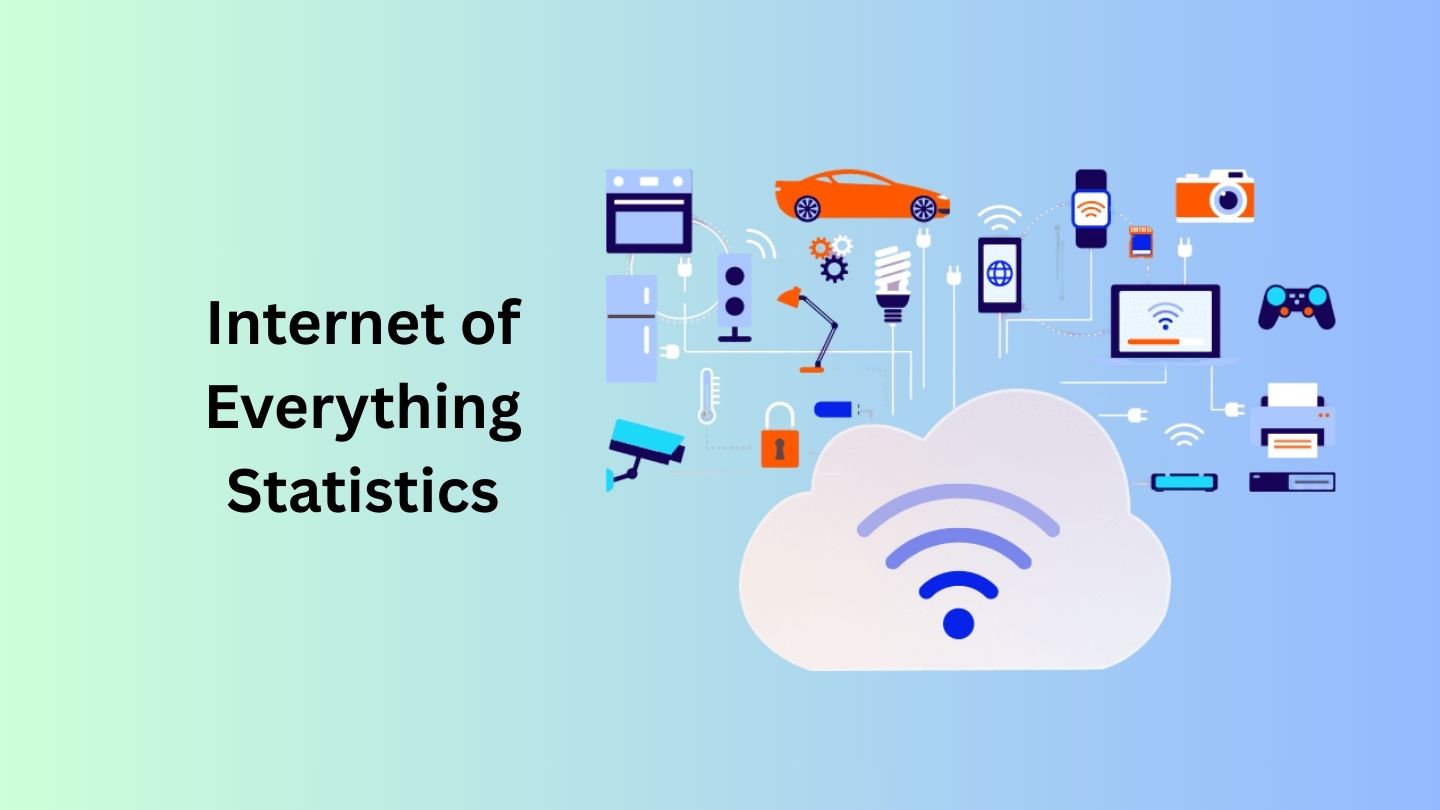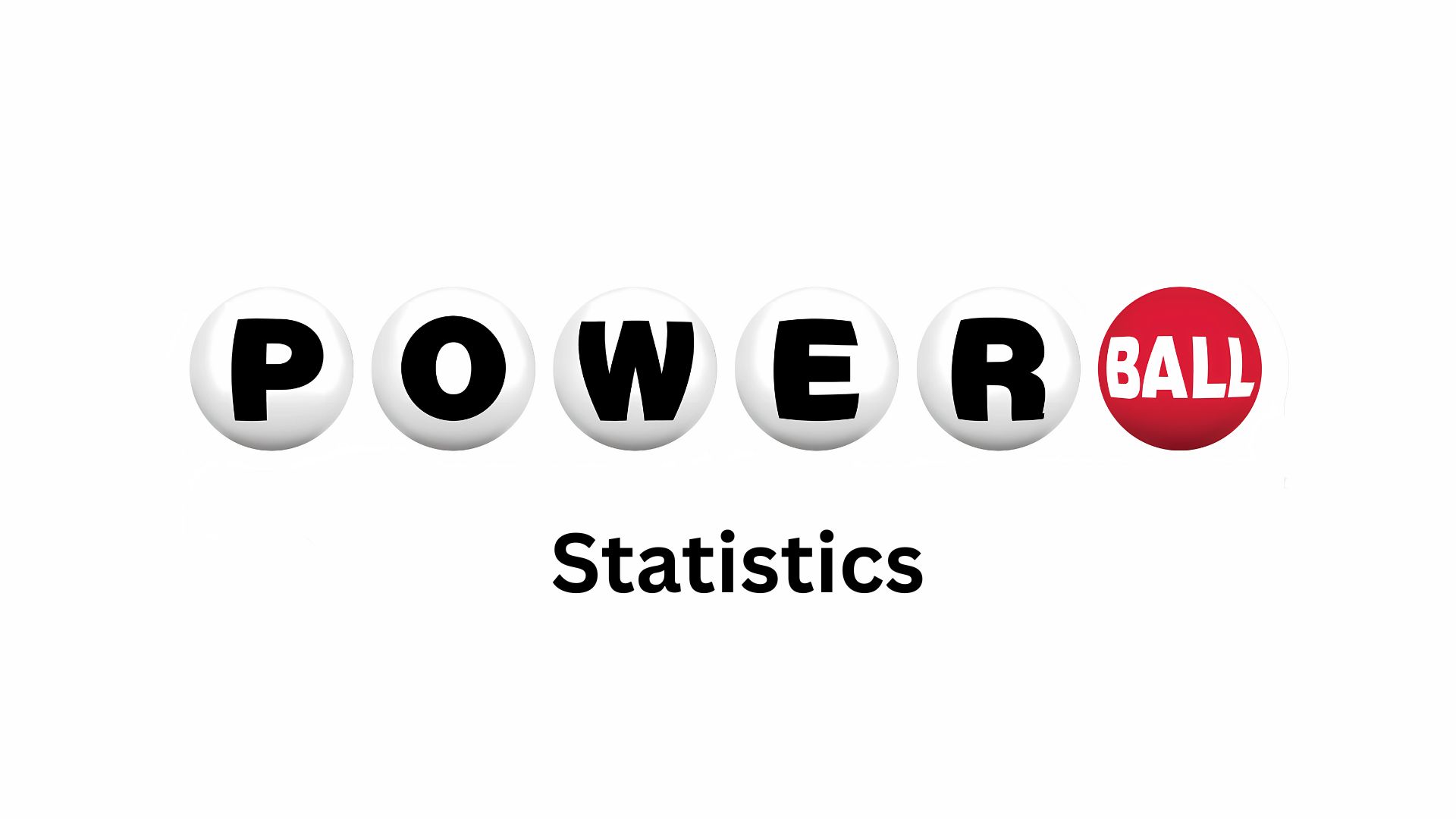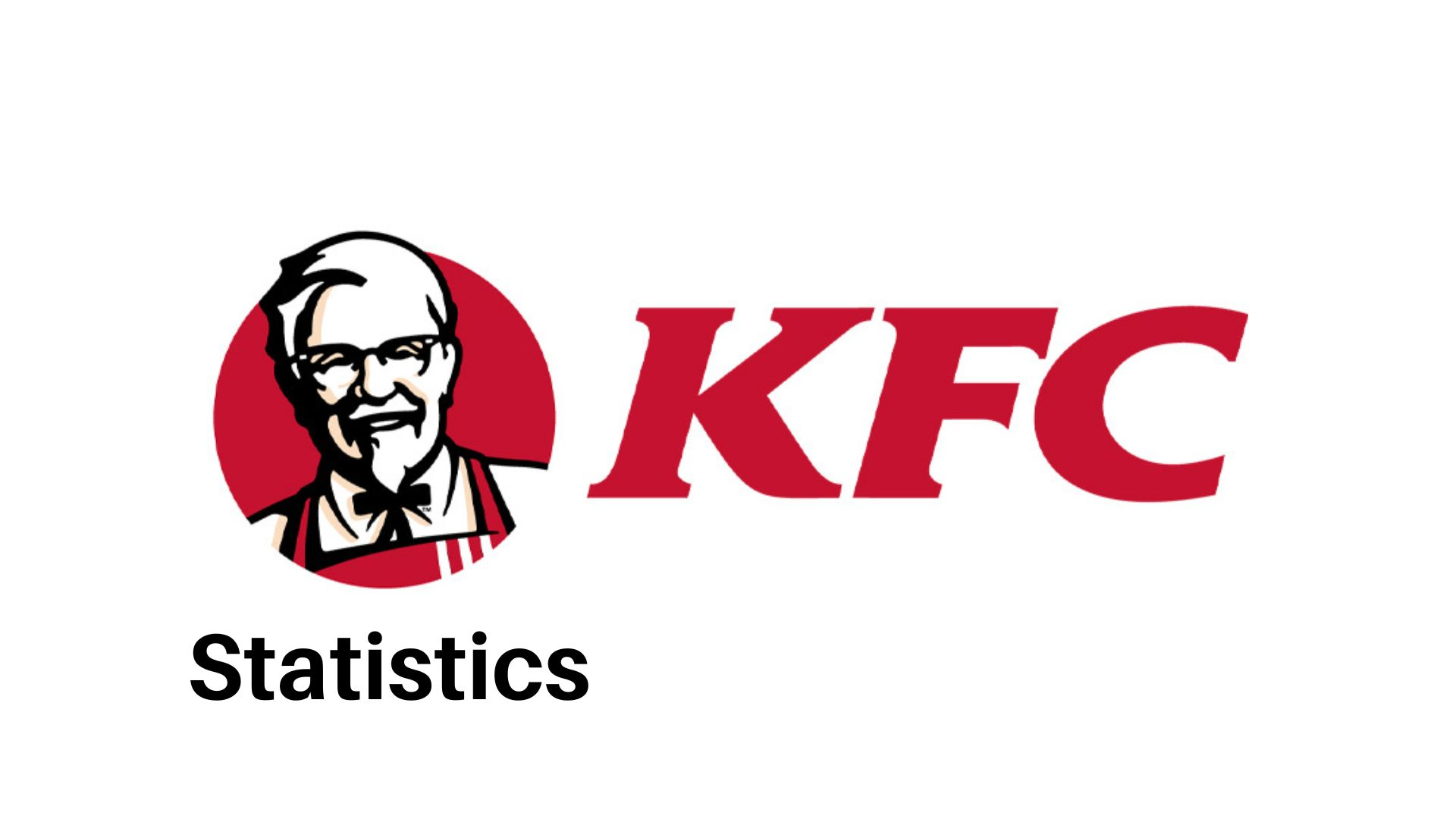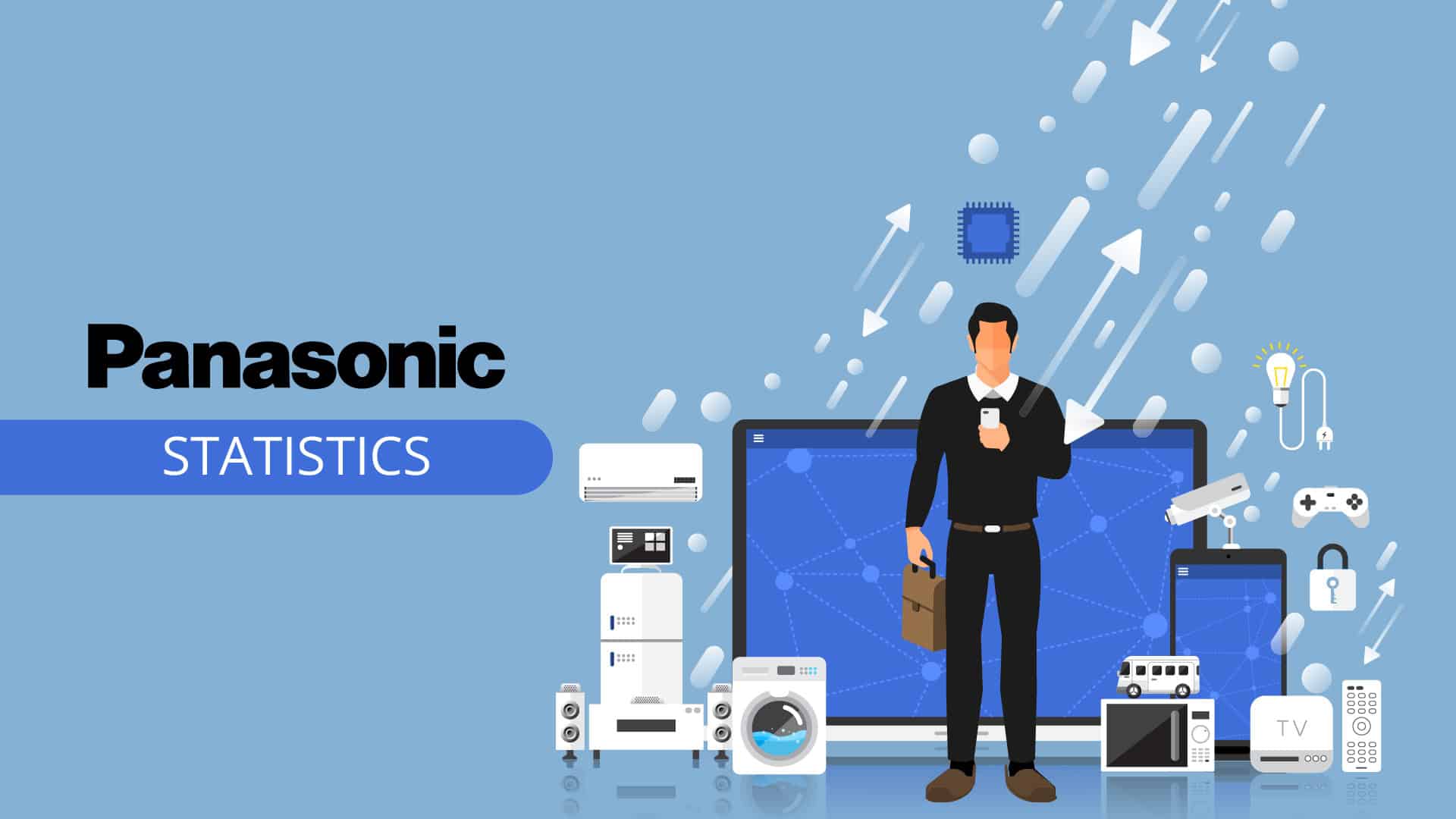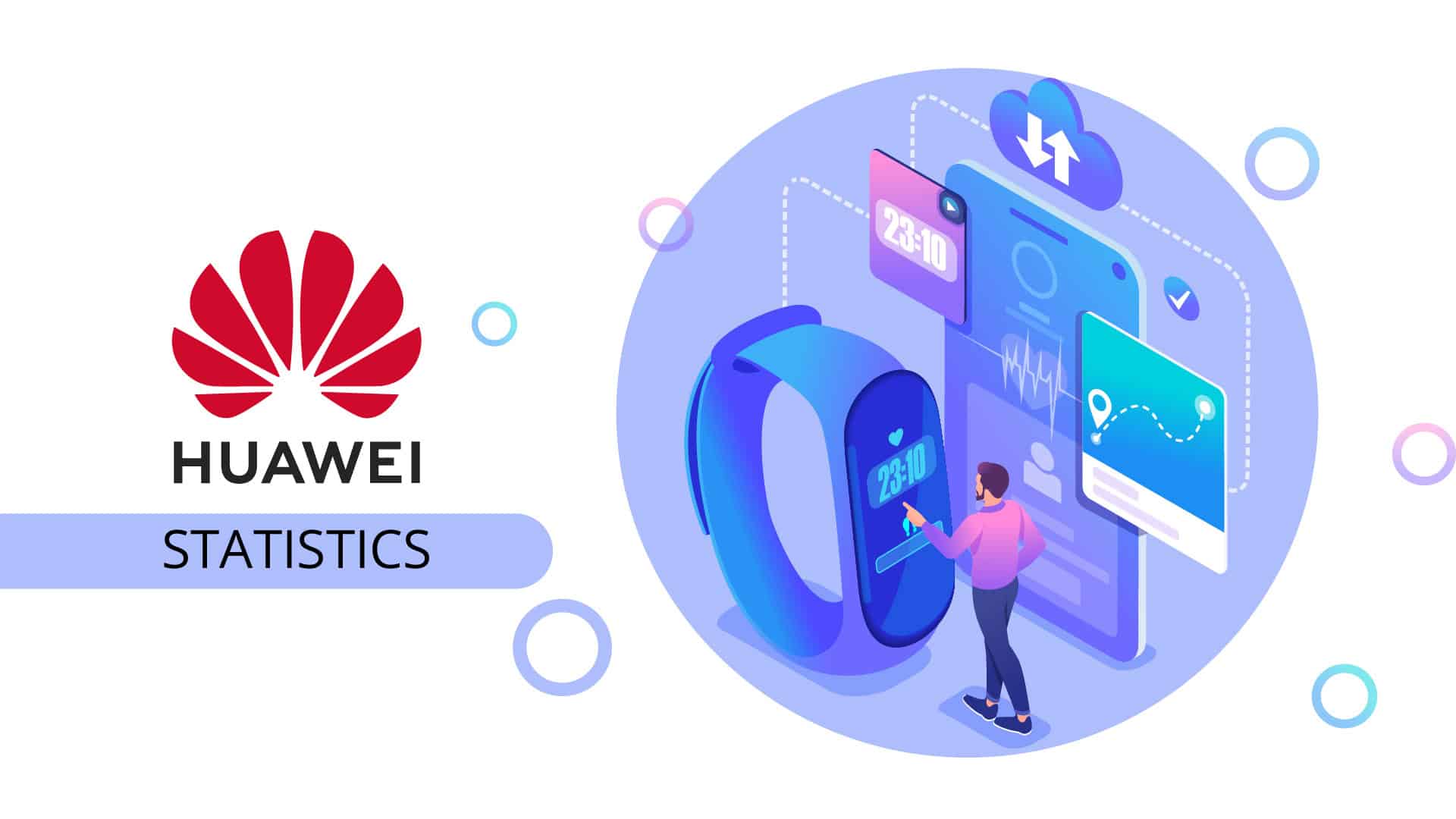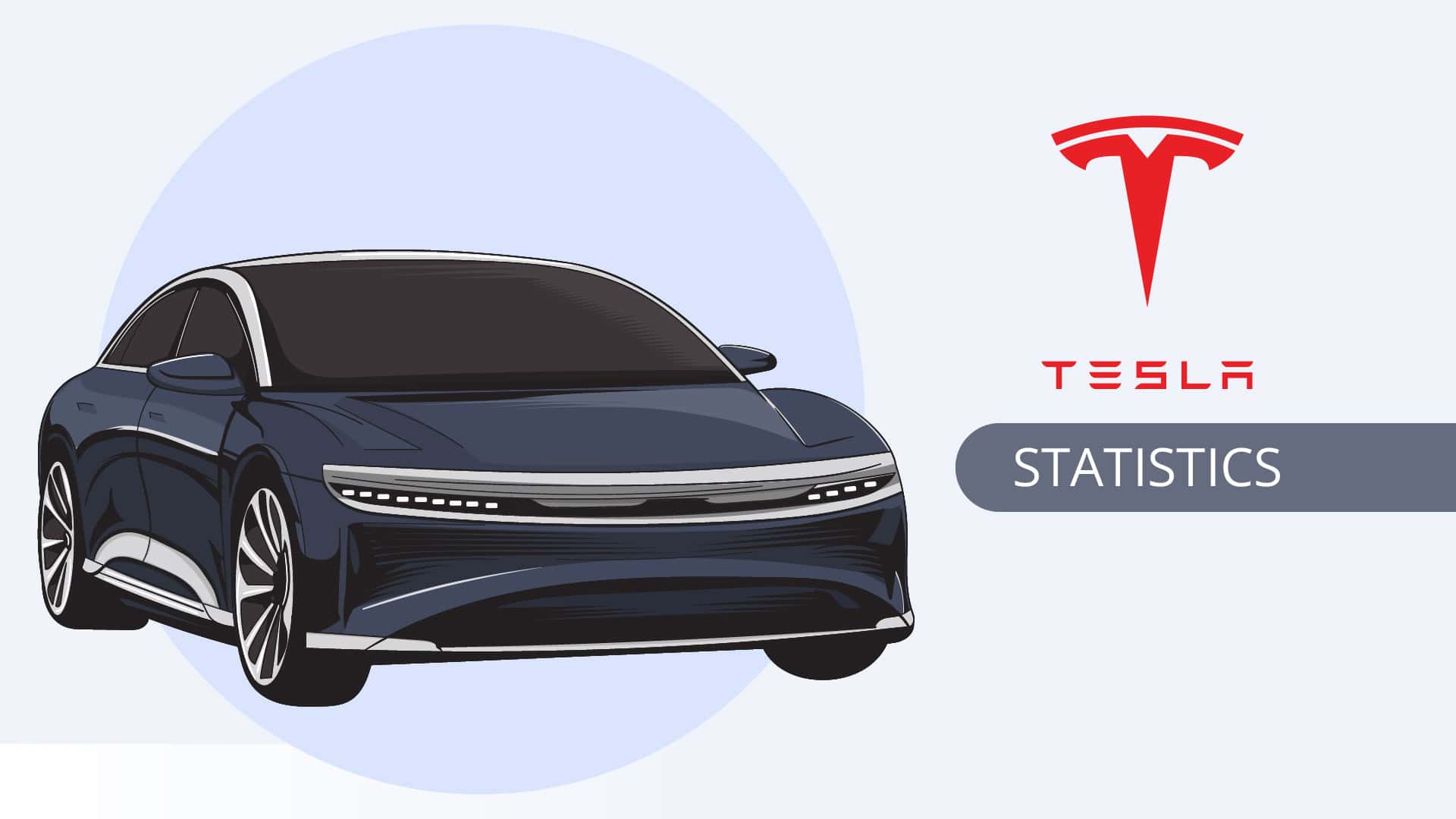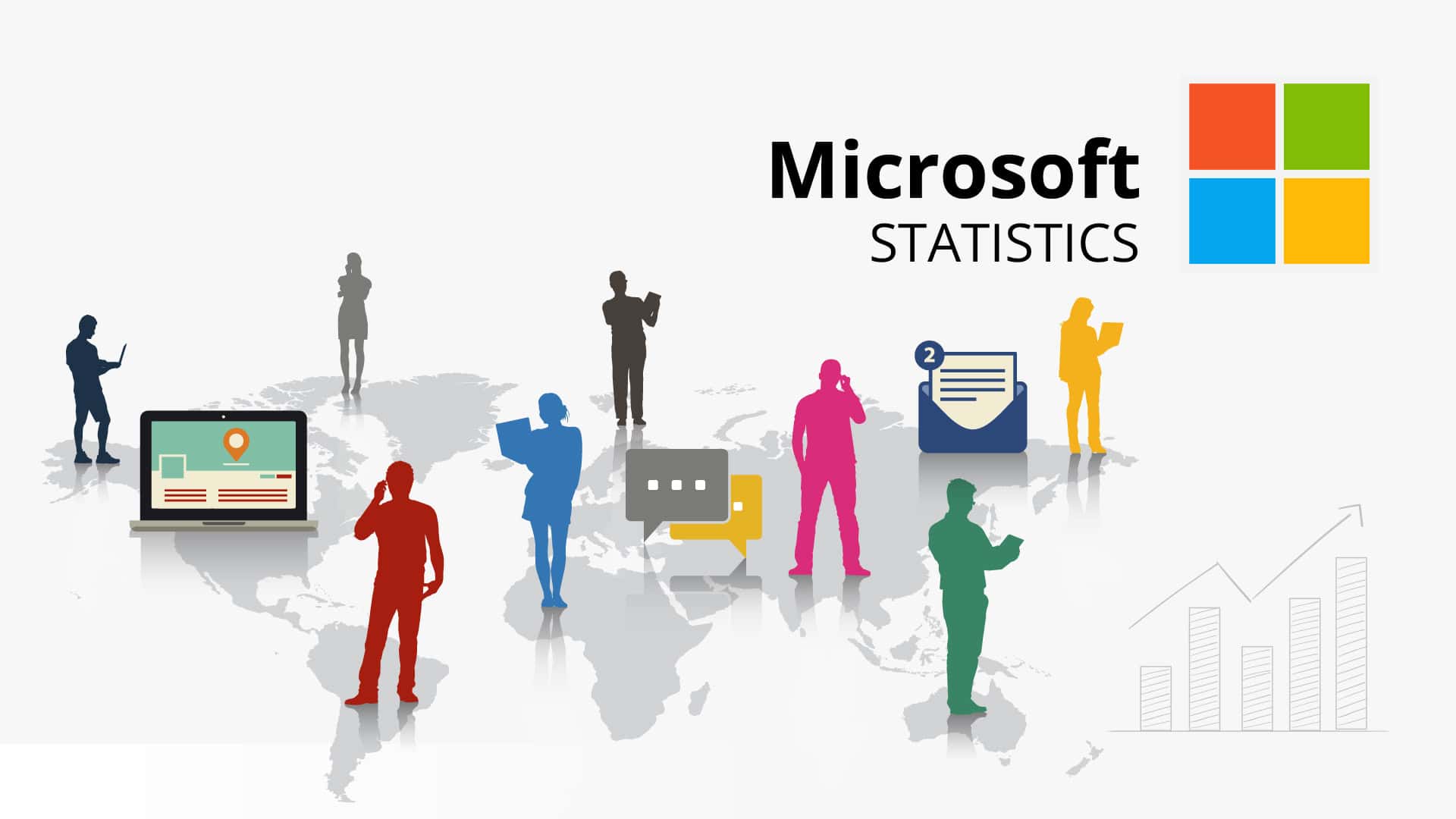Jewellery Statistics By Revenue, Demographics, Sales and Facts

Updated · Mar 13, 2025


TABLE OF CONTENTS
Introduction
Jewellery Statistics: The global jewellery industry has been influencing the apparel market for the past decades. Diamonds are forever, they say, and the fashion jewellery market will have a shiny and bright future.
This is why the biggest companies selling fashion jewellery always continue investing in opening brand-new stores around the globe. The jewellery and diamond market has the greatest impact on the global market. Let’s shed more light on the Jewellery Statistics.
Editor’s Choice
- Online jewellery sales are estimated to account for almost 15% of the total industry in 2022.
- Fast fashion jewellery brands witnessed a 26% decrease in value at the time of the COVID-19 pandemic.
- Only 11% of women who like jewellery don’t enjoy wearing rings. Among ring wearers, 52% prefer statement rings, while 37% prefer band rings over other types.
- In the United States, the average millennial spends 157.9% more on jewellery compared to the average American.
- While millennials represent only 23% of the world’s total population, they contribute to 57% of all global jewellery spending.
- Hong Kong is the biggest place for jewellery in the world, especially when you look at how much money is made per person. Each person there makes about USD 1288.4 in jewellery sales every year.
- Almost 44% of males have bought jewellery in their lives, compared to 56% of females.
- As per Grand View Research, the worldwide jewellery industry is USD 353.26 billion in 2023.
- Gold is a popular material for jewellery. In 2021, over 2,200 metric tons of gold were used in jewellery.
- India and China use the most gold for jewellery.
- As per P.R. Newswire, the personal luxury goods market is predicted to increase by USD 33.53 billion in 2025.
- The United States jewellery industry is estimated to expand between 2022 and 2026 at a 0.95% yearly growth rate.
You May Also Like To Read
- How Late Is The Closest Grocery Store Open?
- Online Food Ordering Statistics
- Kids’ Clothing Statistics
- Amazon Buy Box Statistics
- School Uniforms Statistics
- Men’s Clothing Statistics
- Baby Care Products Statistics
- Women’s Clothing Statistics
General Jewellery Industry Statistics
- According to Business Insider, the top 10 nations that buy maximum gold are:
| Egypt | 27.9 metric tons |
| Russia | 30.2 metric tons |
| Indonesia | 34.2 metric tons |
| Saudi Arabia | 38.1 metric tons |
| Turkey | 39.7 metric tons |
| Iran | 39.7 metric tons |
| United Arab Emirates | 46.2 metric tons |
| United States | 138.2 metric tons |
| India | 463.1 metric tons |
| China | 612.5 metric tons |
- As per the age group, some of the consumers of the jewellery market are below 35 years old, whereas 2/3rd are from 35 years and 55 years old.
- Customers with a higher income than USD 150,000 make just 7% of the buyer’s jewellery.
- As per the experts, the worldwide jewellery market was valued at almost USD 37 billion in 2022.
- On average, an Asian American person spends almost USD 623 on jewellery.
- The jewellery industry is predicted to be valued at USD 307 billion by 2026.
- Jewellery brands like Swarovski and Pandora have witnessed double to triple profit and growth in the last 5 to 10 years.
- Almost 58% of the female section within the costume jewellery market held the biggest share.
- The United States jewellery industry is estimated to expand between 2022 and 2026 at a 0.95% yearly growth rate.
- In 2022, for luxury shopping, the revenue for each person will be almost USD 177.90.
- The Common Objective states that the worldwide jewellery industry is valued at USD 348.5 billion each year.
- According to Statista, the worldwide jewellery industry generates revenue of almost USD 348.5 billion, and luxury jewellery generates revenue of USD 41 billion every year, as per Common Objective.
- According to jewellery statistics, Japan, Hong Kong, India, China, and the United States are the top nations that choose fashion.
- Italy, China, Japan, and France are the nations that buy luxury jewellery.
- According to IBISWorld and Statista, the online jewellery and wristwatch sales industry will be valued at almost USD 7.7 billion in the United States.
- As per P.R. Newswire, the personal luxury goods market is predicted to increase by USD 33.53 billion in 2025.
Global Jewellery Statistics
- In 2022, the global luxury jewellery market was worth about USD 28 billion.
- China, India, and the United States made the most money from jewellery sales that year.
- The market is expected to grow to over USD 330 billion by 2026.
- Lab-made diamonds, which look just like real diamonds but are made in a lab, are a new phenomenon in the jewellery world. They will become more common in the future.
- Gold is a popular material for jewellery. In 2021, over 2,200 metric tons of gold were used in jewellery.
- India and China use the most gold for jewellery.
- Diamonds are also very popular. In 2021, people spent about USD 87 billion on diamond jewellery.
- Silver and platinum are also used in jewellery. Platinum is less popular than it used to be.
- Some big jewellery stores are Signet Jewelers, Richemont Group, and LVMH Group.
- LVMH owns many famous brands like Bulgari and Tiffany & Co. In 2022, LVMH made about USD 10.6 billion from jewellery and watches, which is 5% of its total revenue.
- The jewellery industry is always changing and growing. It will be interesting to see what happens next.
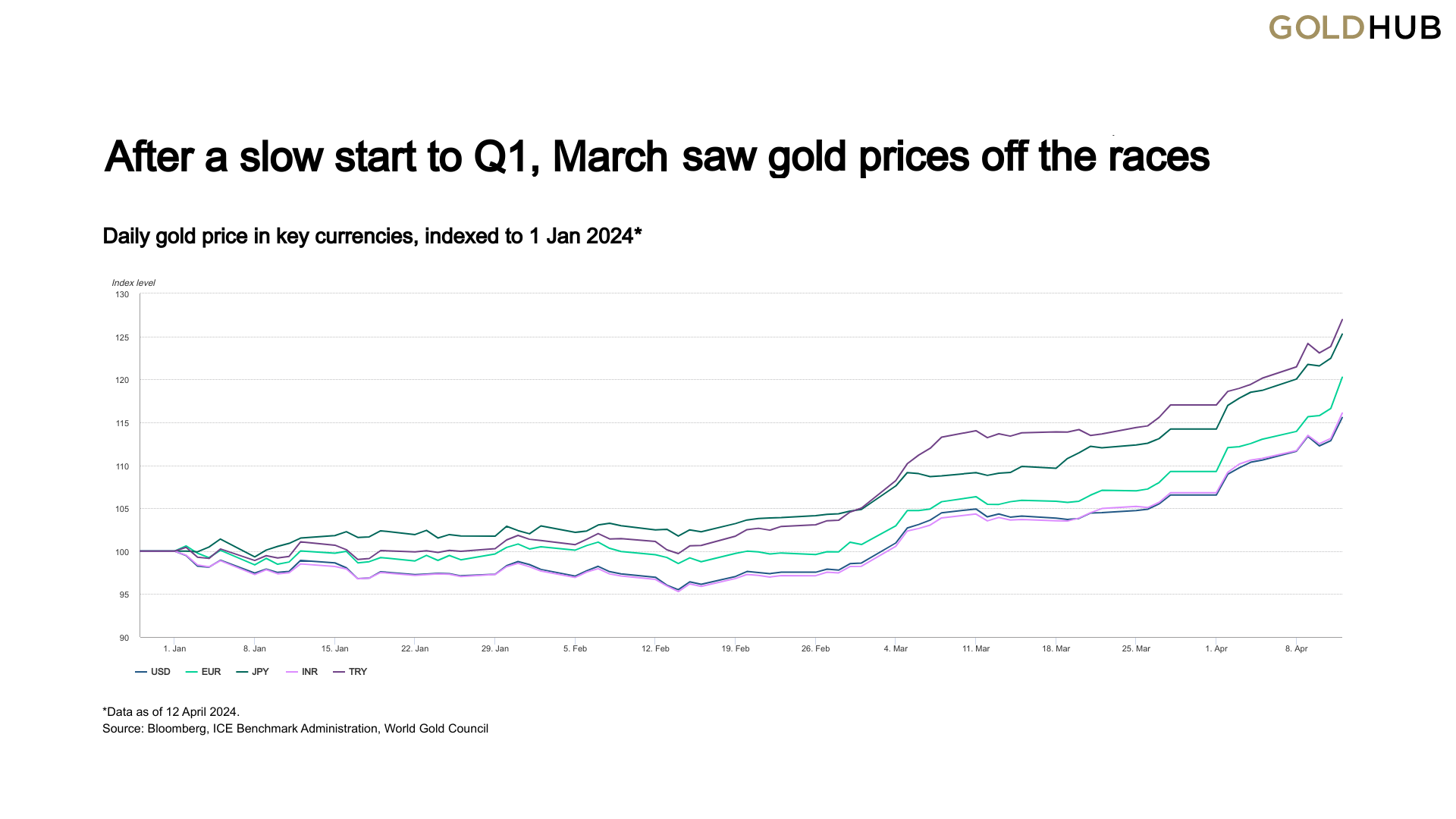
(Source: gold.org)
- The above report shows the daily gold price in the key currencies, which is indexed to 1 January 2024.
- The report says that in January and February, more people bought gold jewellery because the price of gold was low. But in March, when the price went up suddenly, fewer people bought jewellery.
- In China, people bought less gold jewellery in March than last year, but they still spent much money on it.
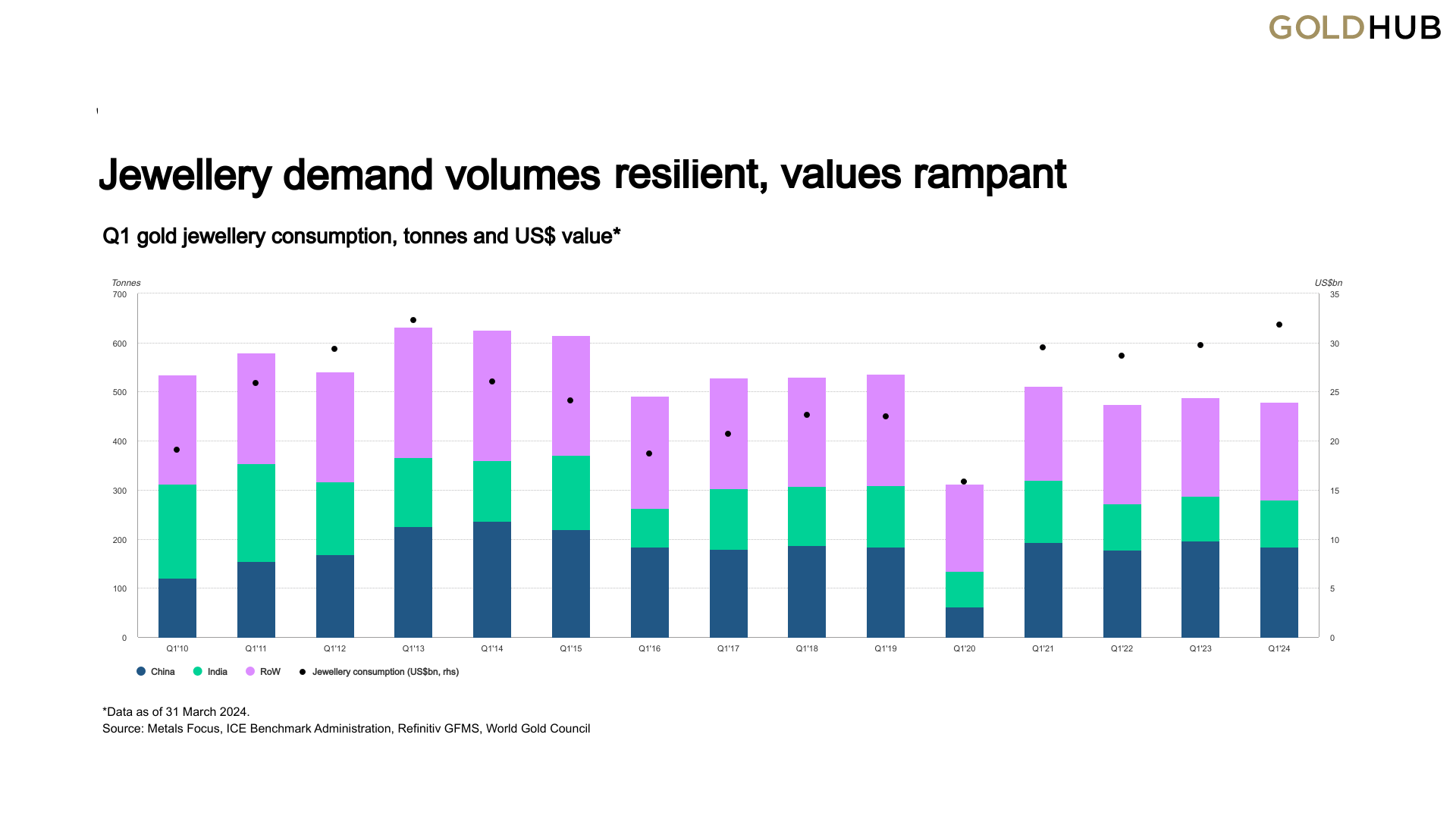
(Source: gold.org)
- In India, the demand for gold jewellery was better this year compared to last year because the economy is doing well. But in March, fewer people bought jewellery because the price of gold went up, and elections were coming soon.
- In Turkey, more people are buying gold jewellery because they think it’s a good investment.
- In the Middle East, the demand for gold jewellery decreased as the price of gold increased. However, in Egypt, more people bought jewellery as the price of gold decreased.
| Tonnes | Q1’2023 | Q1’2023 | Year-on-Year % change |
| World total | 488.9 | 479.0 | -2.0 |
| India | 91.9 | 95.5 | 4.0 |
| China | 195.6 | 184.2 | -6.0 |
- In the U.S., the demand for gold jewellery went down slightly compared to last year because things are going back to normal after COVID-19.
- In Europe, fewer people bought gold jewellery because the economy was not very stable.
- In some countries in Southeast Asia, like Thailand, Vietnam, and Indonesia, fewer people bought gold jewellery because the price of gold went up in March.
- Overall, the report says that while some places saw less demand for gold jewellery because the price of gold went up, other places saw more demand because people think buying gold jewellery is a good idea.
- As per Grand View Research, the worldwide jewellery industry is USD 340.69 in 2023.
- In the past nine years, the value of the jewellery industry has increased by USD 183 billion and has doubled twice in the last few years.
- The U.S., valued at USD 69.1 billion, has the second-largest jewellery industry on the globe, followed by India, with USD 51.4 billion.
The countrywide expenditure on the jewellery market:
| Country | Jewellery Market Value (USD) | Percentage of total jewellery market |
| United Kingdom | $6.63 Billion | 1.95% |
| Germany | $6.78 Billion | 2% |
| Canada | $8.92 Billion | 2.50% |
| Turkey | $9.52 Billion | 2.80% |
| Russian Federation | $10.88 Billion | 3.20% |
| Japan | $11.96 Billion | 3.50% |
| Hong Kong | $12.29 Billion | 3.60% |
| India | $51.44 Billion | 15% |
| United States | $69.15 Billion | 20% |
| China | $141.1 Billion | 41.50% |
You May Also Like To Read
- Tripadvisor Statistics
- How Many Employees Does Target Corporation Employs?
- Google Shopping Statistics
- Online Shopper Statistics
- Food Truck Statistics
- Shopify Statistics
- Affiliate Marketing Statistics
- Content Marketing Statistics
- Astonishing Etsy Statistics
Jewellery Industry Demographics Market Statistics
- As per the GWI, married women earning medium salaries and aged between 25 to 34 years purchase the most jewellery in terms of quantity.
- On the other hand, adults aged 45 to 54 with an annual income of USD 200,000 spend the most money on jewellery.

(Source: lassywomencollection.com)
- Close to 44% of men have bought jewellery at some point, compared to 56% of women.
- Regarding marital status, around 55% of all jewellery sales were made by married individuals.
- Single individuals contribute to almost 30% of global jewellery expenses, while those in relationships make
up only 12%. - Roughly 22% of all jewellery purchasers are between 35 and 44 years old, whereas only 4% of people
buy jewellery after reaching 55.

(Source: lassywomencollection.com)
- Hong Kong holds the title of the largest jewellery market globally, especially considering the revenue generated per person.
- On average, each individual in Hong Kong contributes approximately USD 1288.4 to annual jewellery sales.
| Country | Annual Jewellery Revenue Generated per capita (USD) |
| Republic Of Korea | US$77.20 |
| United Kingdom | US$78.99 |
| China | US$79.60 |
| Italy | US$84.90 |
| Turkey | US$90.40 |
| Australia | US$142.07 |
| Canada | US$173.30 |
| United States | US$187.40 |
| Singapore | US$439.60 |
| Hong Kong | US$1,288.40 |
- The age group between 45 and 54 invests the most money in jewellery. On average, each person in this age range spends about USD 304.6 on jewellery every year.
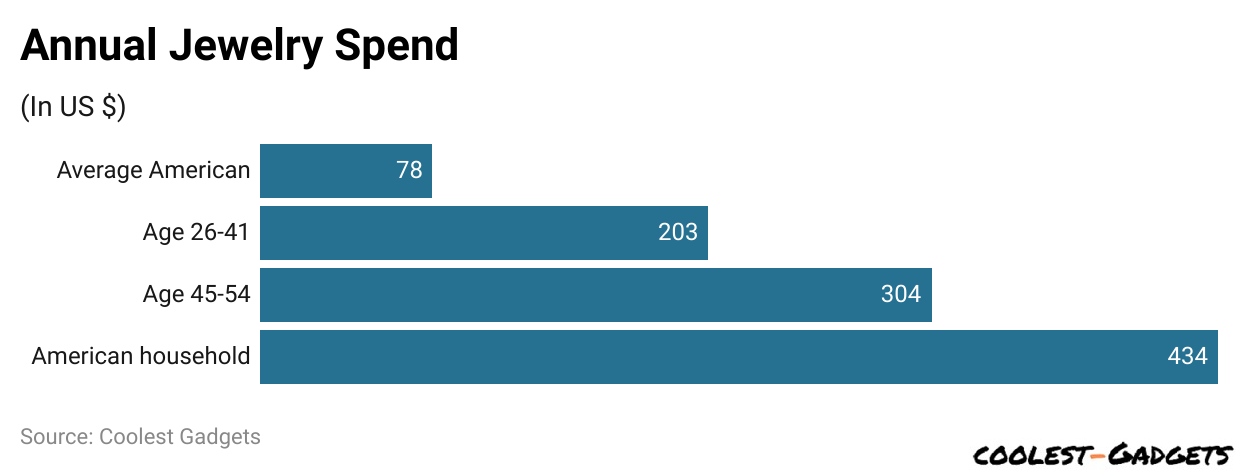 (Source: lassywomencollection.com)
(Source: lassywomencollection.com)
- When it comes to spending money on jewellery based on age, those aged 25 to 34 are the most active shoppers, making up 35% of all jewellery sales worldwide.
- The next largest group is young people aged 16 to 24, who account for 27% of total jewellery spending.

(Source: classywomencollection.com)
- It’s interesting to note that young people aged 16 to 34 make up 62% of all jewellery buyers, while those aged 45 and older represent only 16% of global jewellery shoppers.
- In the United States, the average millennial spends around USD 203 on jewellery every year.
- Additionally, in the United States, millennials spend 157.9% more on jewellery than the average American. Even though they account for just 23% of the world’s total population, millennials contribute to 57% of all global jewellery spending.
- Young people show the most excitement about wearing jewellery, with the 16-44 age group accounting for 82% of all jewellery purchases worldwide.
- However, this doesn’t mean older individuals dislike jewellery. They might have already purchased their favorite pieces and now prefer to wear what they have.
Popular Jewellery Sales Statistics
- Research suggests that women tend to like buying earrings, while men lean towards necklaces. But when you look at everyone, necklaces are the most popular type of jewellery.
- Among women, 87% say they wear earrings regularly, 64% wear necklaces, and 47% wear bracelets every day. Surprisingly, only about half of all women (53%) wear rings daily.
- In terms of overall popularity, necklaces are currently the top choice of jewellery. A 2019 study conducted in France, surveying 1003 individuals, found that rings were the most commonly worn type of jewellery (60%), closely followed by necklaces (57%).
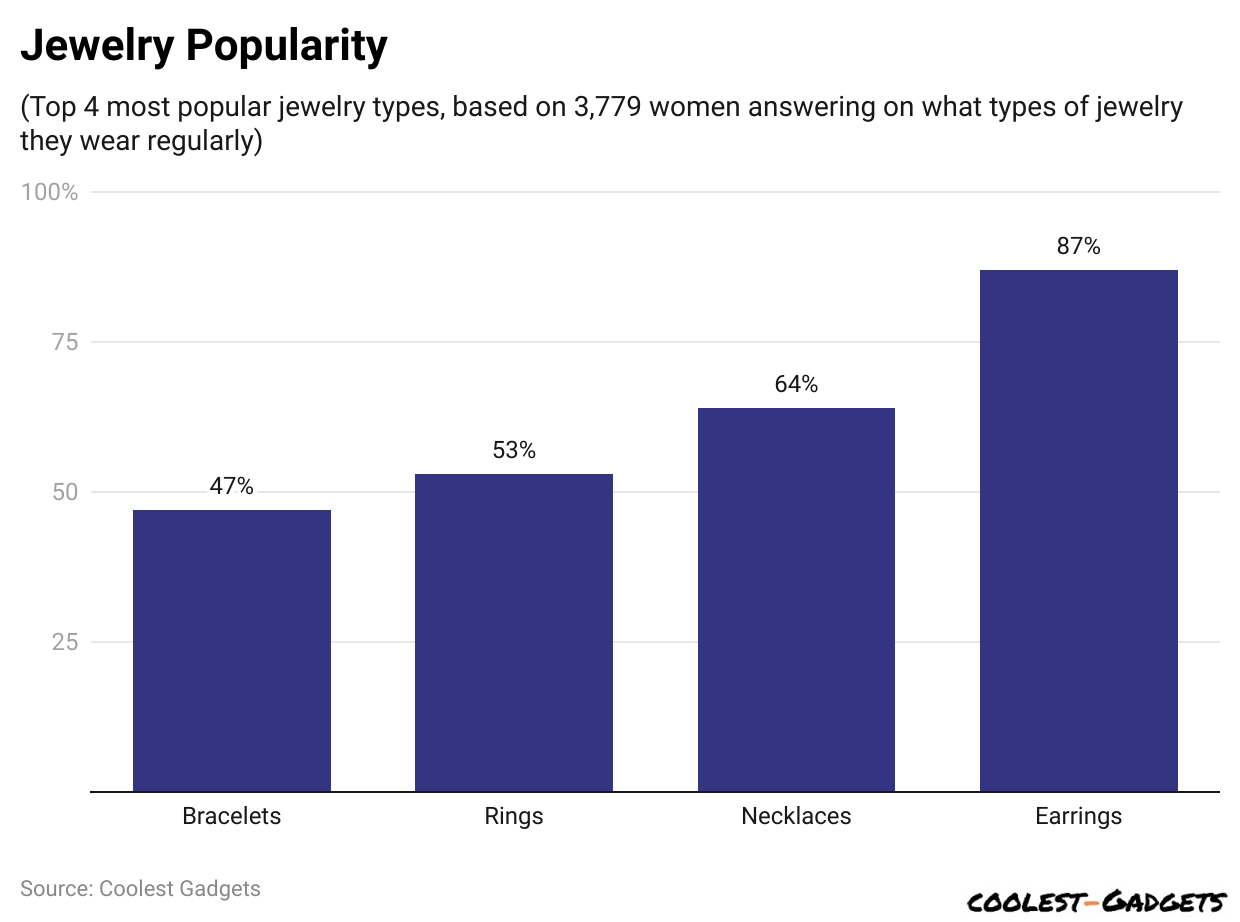 (Reference: classywomencollection.com)
(Reference: classywomencollection.com)
- Here are some detailed insights into jewellery popularity by category:
- Necklaces: Most people (64%) prefer a solitaire pendant, while 66% of women like a separate chain and pendant, and 34% prefer a necklace with the chain attached.
- Earrings: About 70% of women prefer round-cut stones for their stud earrings, with 41% choosing 1-1.5 carats as the most popular stone size. The most desired earrings are studs with 1-carat, round-cut diamonds.
- Bracelets: Tennis bracelets are the favorite style, with 51% of women choosing them over other types (bangles are the next favorite, with 26% selecting them). Additionally, 47% of women prefer wearing bracelets in stacks, while only 39% prefer wearing a single bracelet at a time.
- Rings: Only 11% of women who like jewellery don’t enjoy wearing rings. Among ring wearers, 52% prefer statement rings, while 37% prefer band rings over other types.
- According to data from 117 American jewelers in September 2016, the average price for jewellery is USD 804, with a median price of USD 350.
- Considering the average combined gross profit margin from Signet Jewelers and Tiffany and Co. (recently acquired by LVMH) is 49.1%, jewelers can expect to pay USD 394 for an average-priced jewellery item and USD 172 for a median-priced item before selling it.
- This study focused on jewellery in the United States priced between USD 40 and USD 10,000, excluding engagement rings and wedding bands. Since most jewellery is made from precious metals like gold and silver, and the top two jewellery make up around 5% of the global market, this gives a good estimate of jewellery costs worldwide.
Jewellery Industry Statistics
- Sustainable and culturally sourced jewellery is predicted to increase by 20% yearly.
- Fast fashion jewellery brands witnessed a 26% decrease in value at the time of the COVID-19 pandemic.
- Lab-grown diamonds have a market increase rate of 15% yearly.
- E-commerce sales in the jewellery market grew by 10.6% in 2021.
- Females make up almost 65% of the workforce in the jewellery market.
- The jewellery market in the United States only has a revenue of almost USD 71.3 billion.
- Social media motivated almost 75% of the buyers’ decisions in the jewellery section.
- The median household expense on jewellery in the United States is almost USD 615 every year.
- Between 2021 and 2028, the jewellery industry is projected to increase at an 8.1% CAGR.
- Till 2025, online luxury jewellery sales are estimated to increase by USD 60 billion.
- By 2025, the platinum jewellery industry is predicted to reach USD 9.2 billion.
- The median yearly worldwide consumption of gold for manufacturing jewellery is almost 2,200 metric tons.
- India and China accounted for almost 60% of the worldwide demand for jewellery made up of gold.
- The jewellery repair industry is valued at almost USD 1.5 billion in the United States yearly.
- Online jewellery sales are estimated to account for almost 15% of the total industry in 2022.
- The jewellery section employs almost one million professionals worldwide.
Jewellery Price Statistics
- Considering the average profit margin of 49.1% from the top two global jewelers, Signet Jewelers & Tiffany and Co (now owned by LVMH), jewelers can expect to spend USD 394 for an average-priced jewellery item and USD 172 for a median-priced item before selling it.
- The study focused on jewellery in the United States priced between USD 40 and USD 10,000, except for engagement rings and wedding bands.
- Since most jewellery sold globally is made from precious metals like gold and silver, and the two largest jewelers make up about 5% of the global market, this gives a clear picture of the overall cost of jewellery worldwide.
- Based on market data from these two major jewellery businesses, you can anticipate selling jewellery for 1.6-2.7 times its original acquisition price, including any marketing costs.
- In 2021, Signet Jewellers Limited sold jewellery for USD7.826 billion (operating revenue), with a cost of revenue of USD 4.702 billion, resulting in an average markup of 66.4%.
- In 2020, Tiffany & Co. reported revenue of USD 4.424 billion and a cost of revenue of USD 1.662 billion, showing an average markup of 166.2%.
- The combined average jewellery markup for Signet Jewellers and Tiffany & Co. is 116.3%, equaling a 2.16 multiplier on the original total cost of revenue.
- Here’s a typical jewellery business pricing model based on these numbers: (PRODUCT ACQUISITION COSTS + EXPECTED PRODUCT MARKETING COSTS PER UNIT SOLD) x 2.16
- If you’re considering starting a jewellery business, you can expect to sell your jewellery with a 60-170% markup on the original acquisition price, including possible product marketing costs.
Conclusion
As we conclude our overview of the jewellery industry in 2024, it’s clear that creativity, adaptability, and market awareness are essential for success. According to Grand View Research, the market is expected to grow at a rate of 8.1% CAGR, reaching a value of USD 480.5 billion by 2025. By staying attuned to emerging trends and seizing opportunities, businesses can position themselves for success in the ever-evolving jewellery landscape.
The future holds promise for those ready to innovate. Seeking advice from experts can offer valuable insights into the world of jewellery e-commerce. Embrace the opportunities in the dynamic jewellery market and boost your sales. Shine brighter in the evolving world of jewellery.
Sources

Pramod Pawar brings over a decade of SEO expertise to his role as the co-founder of 11Press and Prudour Market Research firm. A B.E. IT graduate from Shivaji University, Pramod has honed his skills in analyzing and writing about statistics pertinent to technology and science. His deep understanding of digital strategies enhances the impactful insights he provides through his work. Outside of his professional endeavors, Pramod enjoys playing cricket and delving into books across various genres, enriching his knowledge and staying inspired. His diverse experiences and interests fuel his innovative approach to statistical research and content creation.


